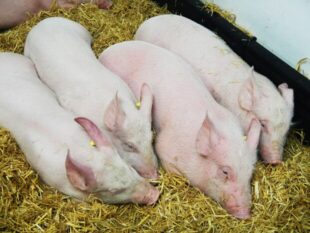environmental land management schemes
On Friday 26 January, we held a webinar for farmers. During the session, we went through the actions and payments available through our environmental land management schemes in 2024. This post includes a link to the recording.
We're pleased to announce a fourth call for tests and trials to help us test and further develop our environmental land management schemes. In this post, I'll share what we plan to explore, how you can apply and details of an upcoming webinar.
In this film, farmers from the Aqualate Mere catchment share their experiences of taking part in Tests and Trials. This test created a land management plan and worked to set priorities for the catchment, incorporating biodiversity, water quality and carbon sequestration.
Hedgerows store carbon, support crop pollinators, create habitats for animals, slow water flow and create shade and fodder for animals. We want to protect the hedges we have, invest in their maintenance and support further planting. We also want to make sure that hedgerow regulations work for wildlife, the environment and farmers. Today we launched …
This year, the Sustainable Farming Incentive (SFI) offer will be bigger and more flexible. We'll start accepting applications for the new offer in a controlled rollout from August. Learn how SFI can provide a steady income, help make your farm more productive and support you to produce food sustainably.
Countryside Stewardship provides financial incentives for farmers, foresters and land managers to look after and improve the environment. Through the scheme, thousands of farmers are being paid for the valuable work they do. In this post, we’ll give you a refresher, share some facts and figures and explain how you can get involved.
In this post, I’ll share a few scientific examples of how the actions within the Sustainable Farming Incentive can support businesses, bring about positive environmental outcomes whilst maintaining — and in some cases boosting — food production.
In this episode, Lisa Warne talks to John Renner and his son, Charlie. John farms on the border of the Northumberland National Park between Berwick-upon-Tweed and Alnwick. Charlie is a farm business consultant and continues to help out on the farm. Lisa gives an update on the growth and rollout of our environmental land management …
You may have seen in our recent environmental land management update that the second round of Landscape Recovery will open in spring. To help you prepare, we’re hosting a series of webinars. In this post, I’ll share a brief overview of Landscape Recovery, our progress so far and the details of those webinars.
Published today, the Environmental Improvement Plan sets out the actions we must take to help us restore nature, tackle environmental pollution, and increase the prosperity of our country. In this post, I’ll explain what the Environmental Improvement Plan means in the context of our work and, by extension, what this means for farmers and land managers …













 The
The 